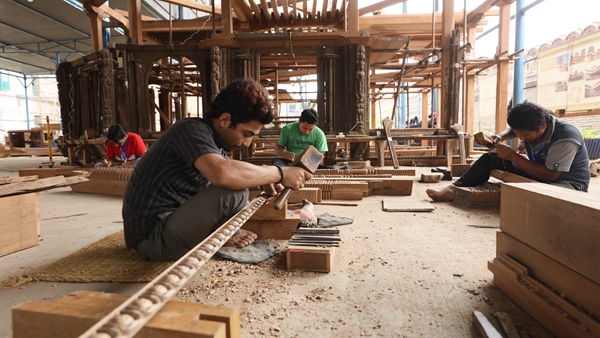

"We were there to conduct feasibility studies and discuss technical and restoration issues," says Yuan, who was the main language interpreter from the Chinese side during the trip that lasted for about one and a half months.
The project officially kicked off in August 2017. The Chinese Academy of Cultural Heritage undertook the restoration work under the guidance of the National Cultural Heritage Administration of China. It is among China's largest cultural heritage restoration foreign aid projects that have been conducted in six countries by the end of 2020.
China offered technical and professional support to the project, which was a challenging job, as the top three stories of Basantapur Palace had collapsed.
Some 80 percent of the complex walls suffered varying degrees of deformation and cracking, with more than 10,000 wooden components, both structural and decorative, undermined.
In addition, the complex remained open to visitors, so the Chinese team conducted risk assessment and built a safety passage for the public.
This put even further pressure on the Chinese team as it had to ensure the safety of visiting tourists as well as the progress and integrity of the project.
"We insisted on retaining as much historical information as possible during the restoration," Yuan says.
Chinese engineers meticulously saved the scattered bricks and tiles, and tried to restore those that were damaged.
This entailed numbering each piece and studying its location before it was put back in place.
Many craftspeople with experience of restoring historical buildings were recruited for the palace project.